|
The Essential Role of
Training
in Missionary Work
By Rod and Sherry Boyd
So what does a missionary do anyway?
Close your eyes. What do you see? If you’ve been around a
few decades, you probably envision a missionary as a white
man donning Bermuda shorts and a pith helmet, wielding a
machete to clear a path through the jungle, taking the Good
News to a remote African tribe. If you’re a young person,
you may think of a group of young people on a missionary
trip doing mime in a city park, building a home for a needy
family or holding babies in an orphanage.
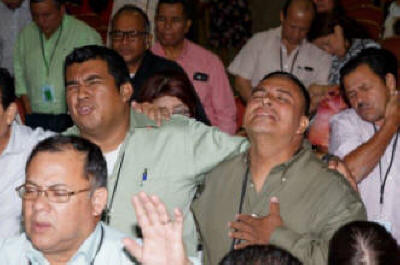 Traditionally,
Assemblies of God World Missions has followed a basic, four-fold strategy
that describes the essence of what a missionary does: Reach, plant, teach
and serve (care). Traditionally,
Assemblies of God World Missions has followed a basic, four-fold strategy
that describes the essence of what a missionary does: Reach, plant, teach
and serve (care).
Missionary work starts with evangelism, preaching the
gospel, reaching people for Christ. In the early days of
missions, the missionary almost always was planting new
churches as the fruit of evangelism. The smart missionary realized he could
not do all the work. Teaching and training new believers
for service, ministry and leadership was an important part of his work. The
missionary would choose a Timothy, discipling him to eventually become
pastor of the new work. The missionary helped the new congregation to
understand the importance of being light in the world, serving
and loving its community… “Let your light shine before men, that they
may see your good deeds and praise your Father in heaven” (Mt 5:16).
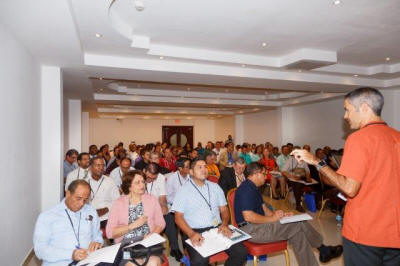 Believers
over 50 tend to identify more with the Evangelism task, but easily see the
Planting task as the logical extension of evangelism. In contrast, those
under 50 tend to identify more with the Serving task. Unfortunately, very
few identify with how important the Teaching task is in missionary work. The
purpose of this short article is to explain and illustrate why the
teaching-training task must remain an essential part in missionary work. Believers
over 50 tend to identify more with the Evangelism task, but easily see the
Planting task as the logical extension of evangelism. In contrast, those
under 50 tend to identify more with the Serving task. Unfortunately, very
few identify with how important the Teaching task is in missionary work. The
purpose of this short article is to explain and illustrate why the
teaching-training task must remain an essential part in missionary work.
Teaching may be used to capture the generic task of
discipling people to grow in their relationship with Christ. When training
could describe the more specific task of preparing God’s people to take
their place of service in the body of Christ and world. The
teaching-training task may be summarized using the following five outcomes:
Incorporation, formation, qualification, multiplication and propagation.
We’ll consider a biblical base for each term and in some cases illustrate
each one from our own missionary experiences.
Incorporation
 It
is impossible to do true evangelism without discipleship. Jesus gave his
church marching orders in the Great Commission, “Go and make
disciples of all nations, baptizing them in the name of the Father
and of the Son and of the Holy Spirit, and teaching them to obey
everything I have commanded you” (Mt. 28:19-20, NIV). One of my good
missionary friends recently reminded me that we are called to make
disciples, not just see people make decisions. There is an important
relationship between baptism and the phrase teaching them to obey. Water
baptism is an outward act that declares the inward work of salvation.
Obedience is the observable evidence of successful teaching and
discipleship. Both are necessary if the new believer is to be incorporated
into the local church. It
is impossible to do true evangelism without discipleship. Jesus gave his
church marching orders in the Great Commission, “Go and make
disciples of all nations, baptizing them in the name of the Father
and of the Son and of the Holy Spirit, and teaching them to obey
everything I have commanded you” (Mt. 28:19-20, NIV). One of my good
missionary friends recently reminded me that we are called to make
disciples, not just see people make decisions. There is an important
relationship between baptism and the phrase teaching them to obey. Water
baptism is an outward act that declares the inward work of salvation.
Obedience is the observable evidence of successful teaching and
discipleship. Both are necessary if the new believer is to be incorporated
into the local church.
Formation
In the book of Ephesians, the Apostle Paul describes the
harmonious function of the body of Christ and defines the purpose of the
ministry gifts given to the church:
“It was he who gave some to be apostles, some to
be prophets, some to be evangelists, and some to be pastors and teachers, to
prepare God’s people for works of service, so that the body of Christ may be
built up until we all reach unity in the faith and in the knowledge of the
Son of God and become mature, attaining to the whole measure of the fullness
of Christ.
Then we will no longer be infants, tossed back and
forth by the waves, and blown here and there by every wind of teaching and
by the cunning and craftiness of men in their deceitful scheming. Instead,
speaking the truth in love, we will in all things grow up into him who is
the Head, that is, Christ. From him the whole body, joined and held together
by every supporting ligament, grows and builds itself up in love, as each
part does its work.” (Eph. 4:11-16).
 The
ministry gift “missionary” doesn’t appear on the list in Ephesians 4:11.
Many consider that missionaries are closely identified with apostles. Others
would suggest that the Apostle Paul was functioning in all of the ministry
gift areas as a missionary. Whatever ministry gift missionary may be, the
purpose of all of the ministry gifts mentioned in Ephesians 4 is to prepare
God’s people for works of service. As a ministry gift, the missionary must
be involved in formation! Effective formation will result in the body of
Christ becoming Christ-like, a growing body that functions efficiently and
effectively. The
ministry gift “missionary” doesn’t appear on the list in Ephesians 4:11.
Many consider that missionaries are closely identified with apostles. Others
would suggest that the Apostle Paul was functioning in all of the ministry
gift areas as a missionary. Whatever ministry gift missionary may be, the
purpose of all of the ministry gifts mentioned in Ephesians 4 is to prepare
God’s people for works of service. As a ministry gift, the missionary must
be involved in formation! Effective formation will result in the body of
Christ becoming Christ-like, a growing body that functions efficiently and
effectively.
The first two outcomes, incorporation and formation, are
closely associated with the first two missionary tasks of evangelism and
church planting. It is the local church that has the principle role to
incorporate and form new believers. Missionary involvement in these two
tasks has changed considerably from the early days. We are grateful to those
first missionaries who evangelized and planted churches. Because of their
sacrificial work and God’s blessing, today all 20 Spanish-speaking countries
in the Latin America / Caribbean region have fully-functioning national
church structures, with more than 20,000 churches pastored by nationals.
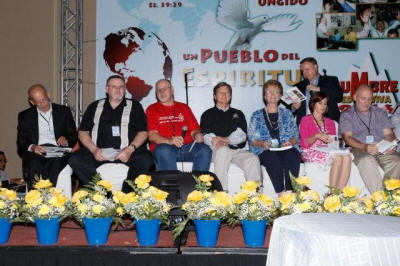 Today’s
missionaries support the work of national churches to evangelize and plant
churches. Some missionaries are still directly involved in these tasks,
often in a strategic way that impacts hundreds or thousands of nationals
doing the same. Many missionaries are involved in new frontiers of
evangelism among unreached people groups (many of whom are indigenous),
student and university students and children. As such, as they evangelize
and plant churches, they are actively involved in teaching for incorporation
and formation. The Latin America / Caribbean (LAC) Region of Assemblies of
God World Missions has identified six initiatives, work priorities for our
missionaries: Today’s
missionaries support the work of national churches to evangelize and plant
churches. Some missionaries are still directly involved in these tasks,
often in a strategic way that impacts hundreds or thousands of nationals
doing the same. Many missionaries are involved in new frontiers of
evangelism among unreached people groups (many of whom are indigenous),
student and university students and children. As such, as they evangelize
and plant churches, they are actively involved in teaching for incorporation
and formation. The Latin America / Caribbean (LAC) Region of Assemblies of
God World Missions has identified six initiatives, work priorities for our
missionaries:
-
Missions Mobilization – Prepare and send nationals as
missionaries to the world
-
Church Planting – Prepare and facilitate church
planters
-
Unreached People Groups – Prepare and facilitate
efforts to reach unreached peoples
-
University Students – Prepare and facilitate efforts
to reach university students
-
Children – Prepare and facilitate efforts to reach
children
-
Compassion Ministries – Prepare and reach out to the
marginalized
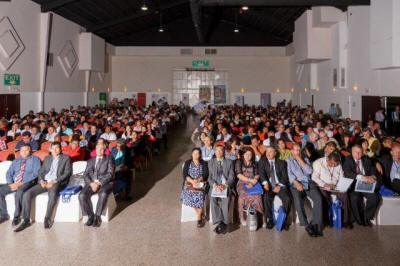 Many
missionaries are involved in the training task, in preparing God’s people to
take their place of service in the church and world. Without effective
training, it would be impossible to prepare the pastors needed for the
20,000 churches in Spanish-Speaking Latin America. Training is required to
prepare those who will be involved in the six initiatives for our region.
Training is the task that builds the infrastructure of ministry. Many
missionaries are involved in the training task, in preparing God’s people to
take their place of service in the church and world. Without effective
training, it would be impossible to prepare the pastors needed for the
20,000 churches in Spanish-Speaking Latin America. Training is required to
prepare those who will be involved in the six initiatives for our region.
Training is the task that builds the infrastructure of ministry.
This brings us to the three training outcomes:
Qualification, Multiplication and Propagation. All three of these outcomes
are included in the “training formula” found in Paul’s words to Timothy, “And
the things you have heard me say in the presence of many witnesses entrust
to reliable men who will also be qualified to teach others” (2
Tim. 2:2). This verse has been the North Star of both our pastoral and
missionary ministry for nearly 40 years!
Qualification
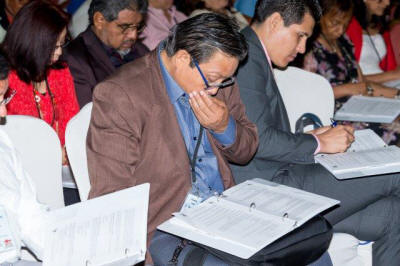 The
Ephesians 4 passage cited earlier suggests that there are degrees of
preparedness. We’re all in process until we reach “the whole measure of
the fullness of Christ.” The training task implies that there is
qualification in ministry. In essence, Paul told Timothy to pick good people
and teach them to be better! The
Ephesians 4 passage cited earlier suggests that there are degrees of
preparedness. We’re all in process until we reach “the whole measure of
the fullness of Christ.” The training task implies that there is
qualification in ministry. In essence, Paul told Timothy to pick good people
and teach them to be better!
Our ministerial training program in LAC does the same.
Those with a recognized call to serve God in ministry, who demonstrate basic
proficiency in Bible, theology and ministry (gained at the local church
level), are invited to enter the ministerial level of Bible school. A total
of 96 credits of study are required to graduate from this level. Each credit
represents 16 classroom hours and 32 additional hours of homework, reading
and practical activity. This education is the norm for 99% who become
ordained ministers in LAC.
 We
have the privilege of working with an army of volunteer teachers who are
training even a larger army of Timothies. In 2008 we began a teacher
certification program called PROCEPA for Bible school teachers. Most of
these teachers are themselves only graduates of Bible school. We are
encouraging them to continue in their education and become certified as
teachers through PROCEPA and other advance study. Challenging our teachers
with this new qualification has motivated them to continue learning and is
helping them to be better Timothy trainers. We
have the privilege of working with an army of volunteer teachers who are
training even a larger army of Timothies. In 2008 we began a teacher
certification program called PROCEPA for Bible school teachers. Most of
these teachers are themselves only graduates of Bible school. We are
encouraging them to continue in their education and become certified as
teachers through PROCEPA and other advance study. Challenging our teachers
with this new qualification has motivated them to continue learning and is
helping them to be better Timothy trainers.
Multiplication
Many years ago, when faced with what seemed to be the
impossible task of learning a new language, someone asked me, “How do
you eat an elephant?” He told me, “One bite at a time.” This
principle works whenever we’re faced with what seems to be an impossible
task. Break it down into smaller, possible tasks. The principle and outcome
of multiplication makes possible what seem to be impossible.
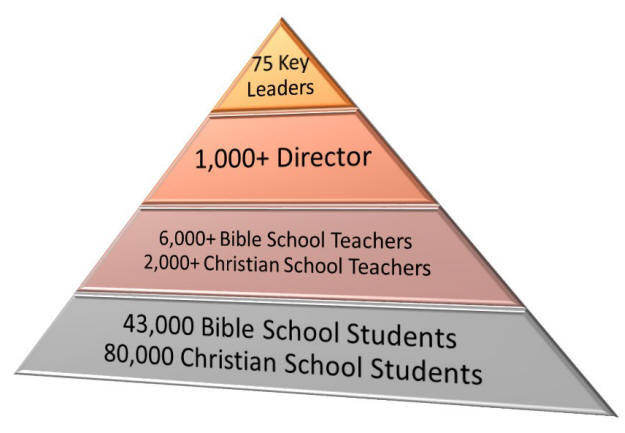
The Latin America Resource and Training Center
(www.lartc.net) exists to
enable leaders, train educators and develop resources. We work closely with
about 75 key national and international leaders. These key
leaders represent more than 1,000 directors of Bible schools and
Christian schools that involve more than 6,000 Bible school
teachers and 1,000 Christian school teachers in preparation of
43,000 Bible school students and ministry to and
discipleship of 80,000 children and youth. How could we
possibly impact all these people?

Our strategy relies upon the principle of multiplication.
If we were able to inspire, equip, somehow enable key leaders and some
directors and teachers, we would be able to leverage our influence to
multiply ministry to thousands of directors and teachers! Through
international events such as the Educators Summits and Educational Leaders
Dialogues, and national events such as the National PROCEPA Seminars and
National Strategic Dialogues, we are now reaching the majority of our
leaders and teachers.
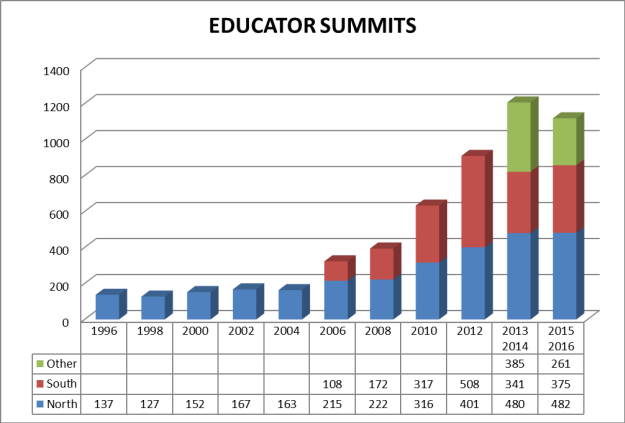
The two primary indicators are the Educator Summits and
the PROCEPA Teacher Training Program. Two Educator Summits are held in even
years, one in Central America for the northern countries and one in the
Southern Cone of South America for the southern countries. The Summits have
grown in recent years (please see the chart above). Because of the demand,
we’ve added an additional Summit in the odd year. The Educator Summits are
30% inspiration, 50% training and 20% family reunion. They are the place to
be if you are an educator. The planning, organization and preparation is a
lot of work for our team, but well worth it. The Summits move around, so
different countries can take their turn at hosting one and so are able to
have a larger delegation. We were privileged to host the northern version
this year in Panama. Most of the photos in this article are from the Panama
Educators Summit.
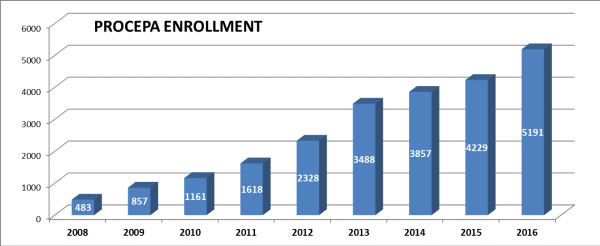
The PROCEPA Teaching Training Program has made the
Summits that much more popular. The program was launched in 2008 at the two
Educator Summits with a total of 483 taking at least one workshop that year.
As the result of the Summits and more importantly National PROCEPA Seminars,
we now have 5,191 teachers, leaders and even potential teachers enrolled in
the program. That’s amazing considering that we estimate that there are
around 6,000 teachers in all.
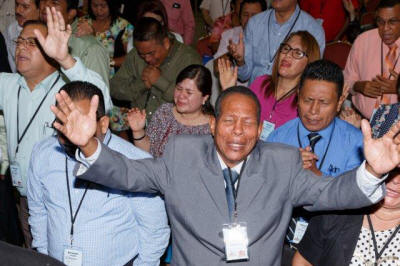 Mexico
is an example of the success of our strategy. Up until recently, Mexico had
not participated much in the training program. Less than 10 years ago the
national Christian Education Director attended the 2009 International
Educational Leaders Dialogue, an event we host in odd years in Panama just
for key leaders. He learned about the new PROCEPA program and the upcoming
Summits. He brought a small group from Mexico. After the 2010 Summit in
Managua, Nicaragua, he asked if there would be a possibility to organize a
Summit for Mexico. He returned to the 2011 Dialogue and 2012 Summit in Costa
Rica. This time with his group he brought the National Superintendent. The
two of them spoke with me during the Summit and made an official invitation
to have a Summit in Mexico in 2013. The Mexico Summit was a great success
with 385 in attendance, 340 of those Mexicans. In February this year,
we participated in Educators Congress in Saltillo, Mexico. More than
800 attended, twice the number expected, with more than 500 newly enrolled
in PROCEPA. We're considering the possibility of conducting an
Educators Summit in Mexico in 2017 and are told that if we do more than
1,000 to attend! Mexico
is an example of the success of our strategy. Up until recently, Mexico had
not participated much in the training program. Less than 10 years ago the
national Christian Education Director attended the 2009 International
Educational Leaders Dialogue, an event we host in odd years in Panama just
for key leaders. He learned about the new PROCEPA program and the upcoming
Summits. He brought a small group from Mexico. After the 2010 Summit in
Managua, Nicaragua, he asked if there would be a possibility to organize a
Summit for Mexico. He returned to the 2011 Dialogue and 2012 Summit in Costa
Rica. This time with his group he brought the National Superintendent. The
two of them spoke with me during the Summit and made an official invitation
to have a Summit in Mexico in 2013. The Mexico Summit was a great success
with 385 in attendance, 340 of those Mexicans. In February this year,
we participated in Educators Congress in Saltillo, Mexico. More than
800 attended, twice the number expected, with more than 500 newly enrolled
in PROCEPA. We're considering the possibility of conducting an
Educators Summit in Mexico in 2017 and are told that if we do more than
1,000 to attend!
Propagation
This last outcome speaks of continuity. Effective
training must include this survival component. It is passing on the
important to future generations. Paul’s training formula emphasizes the
generational nature of training:
“And the things
YOU (2nd Generation) have heard
ME (1st Generation) say in the presence of many witnesses
entrust to
RELIABLE MEN (3rd Generation) who will also be
qualified to teach
OTHERS (4th Generation).”
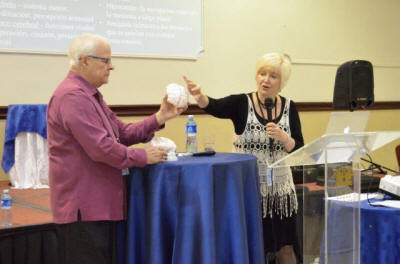 For
Paul, it was ensuring that the doctrine and traditions would live on in
future generations. Our basic teaching plan covers the entire Bible and both
biblical and practical theology (how to do ministry). This message needs to
be passed on. However, we also realize that how this is done needs to be
constantly updated to keep it fresh and relevant. This is all a part of
propagation. For
Paul, it was ensuring that the doctrine and traditions would live on in
future generations. Our basic teaching plan covers the entire Bible and both
biblical and practical theology (how to do ministry). This message needs to
be passed on. However, we also realize that how this is done needs to be
constantly updated to keep it fresh and relevant. This is all a part of
propagation.
Conclusion
So what does a missionary do anyway? These
missionaries are committed to raising up Christian leaders throughout Latin
America. We are committed to training that qualifies, training that
multiplies ministry, and training that will live on for generations to come.
We hope that this long article has helped you to learn what we do as
missionary trainers and why we believe it is important.
We ask you to join with us in praying for and supporting
the Latin America Resource and Training Center. We are committed to advance
the construction of this project before we finish our missionary career. We
trust that this article has helped you to understand how this facility will
directly impact 75 key international and national leaders and hundreds of
directors and teacher. And how the ministry directed from this Center
impacts thousands of teachers, leaders and ministers for generations to
come.
Please visit the Center website (www.lartc.net)
for updates and how you can partner with us to raise up Christian leaders
throughout Latin America.
|